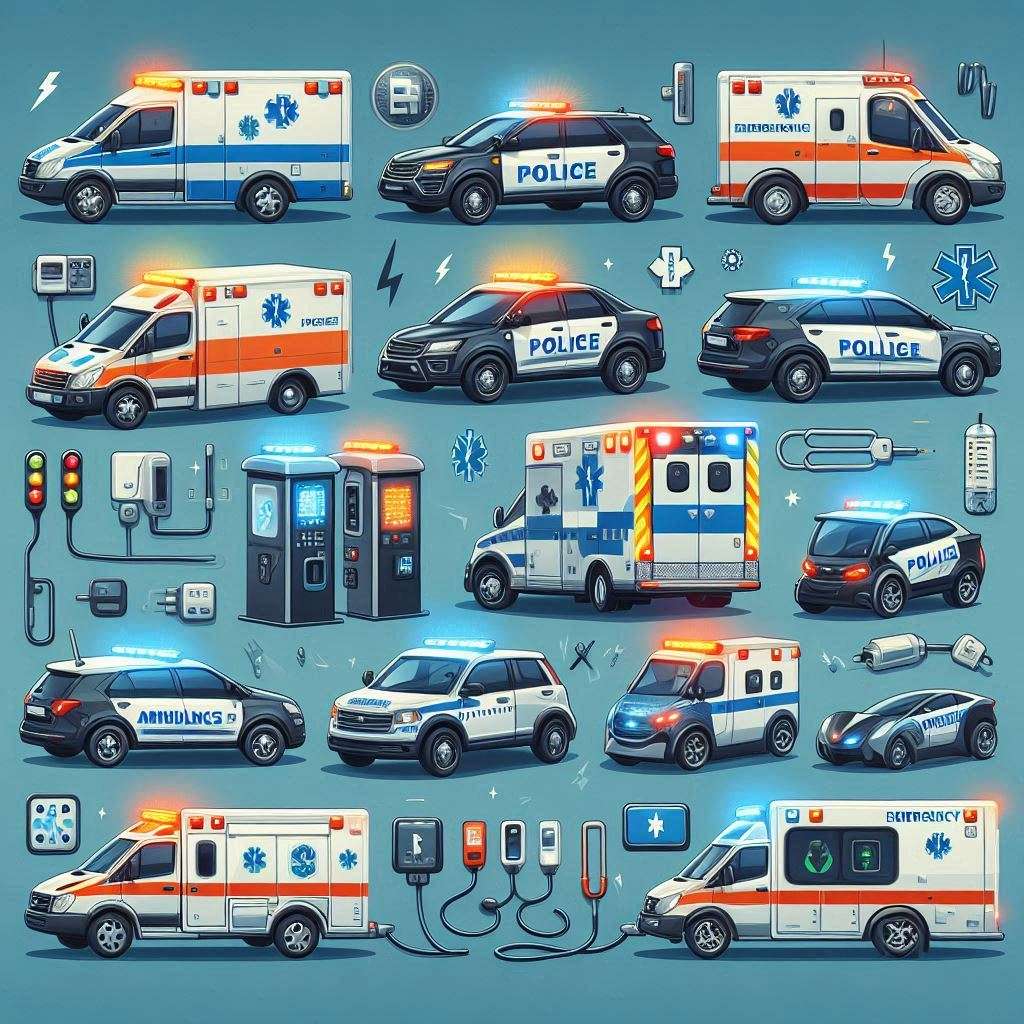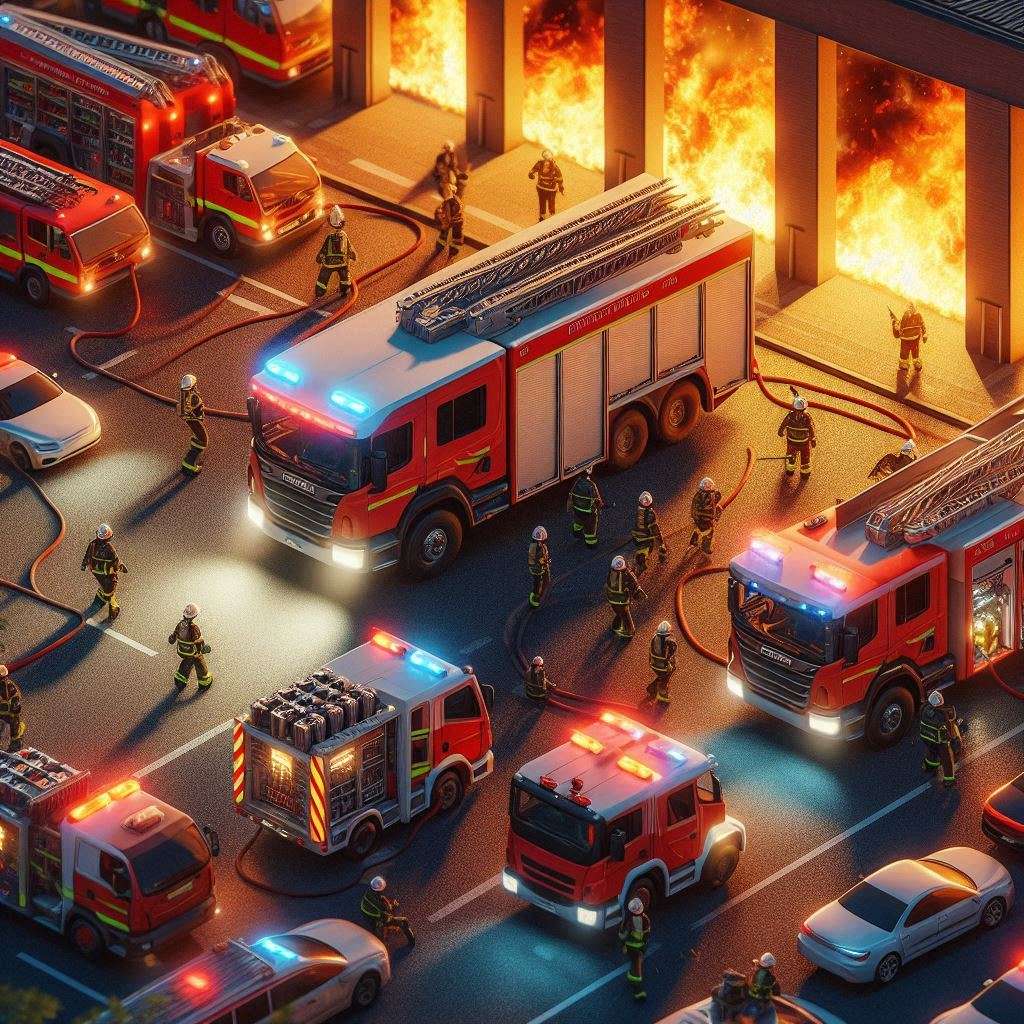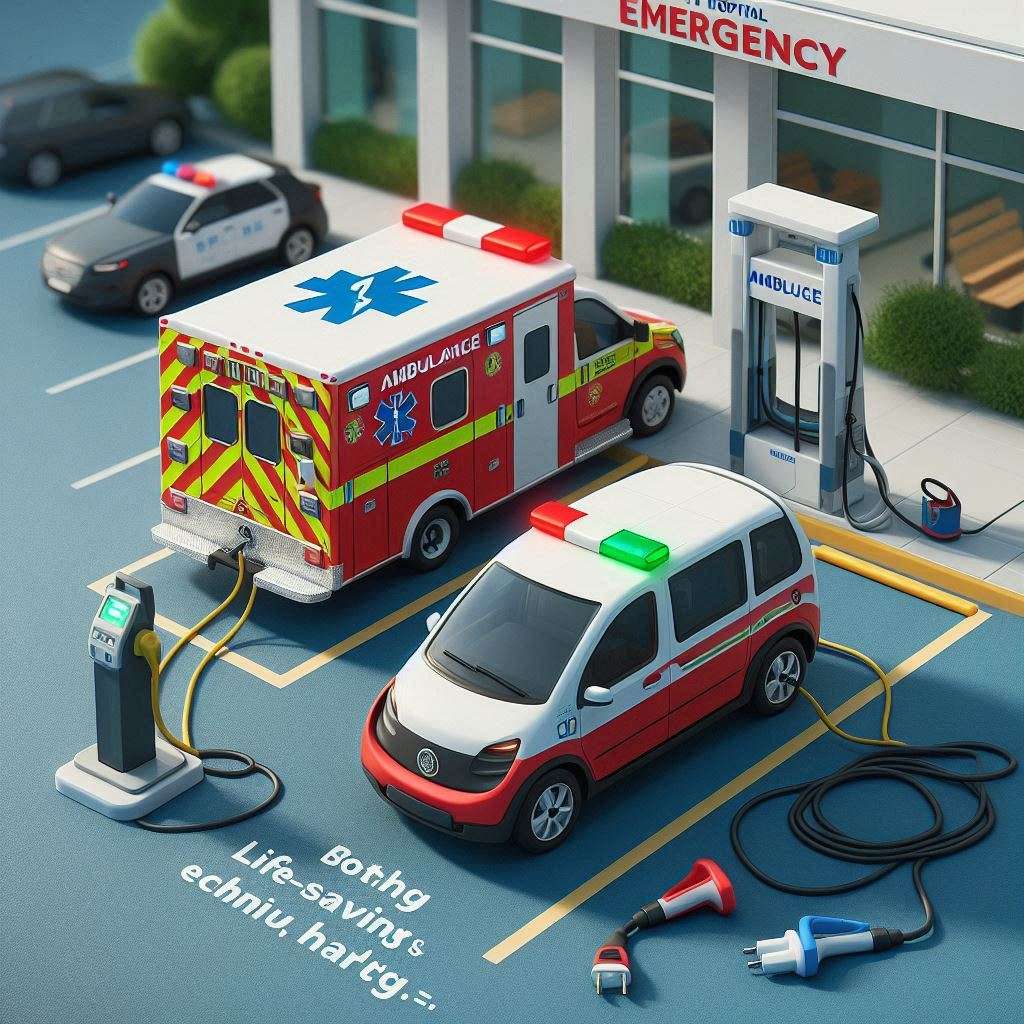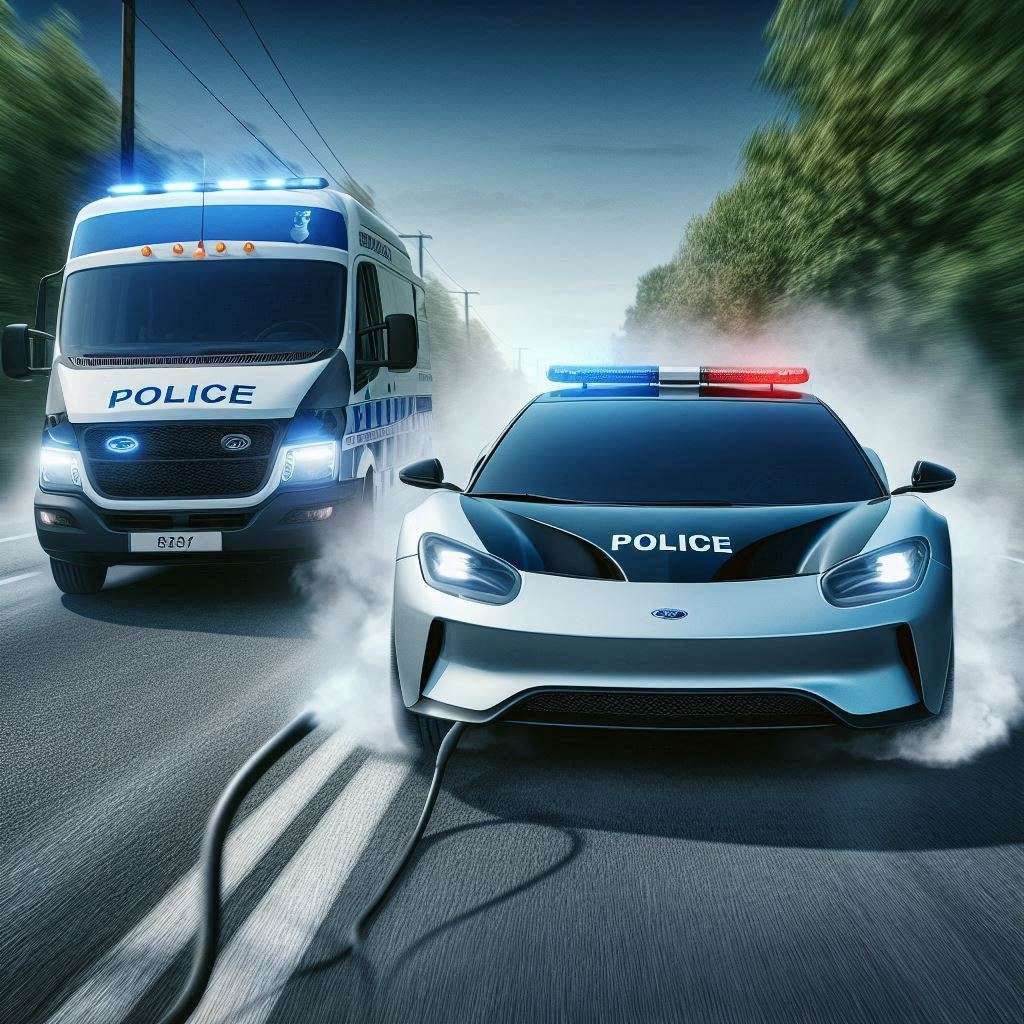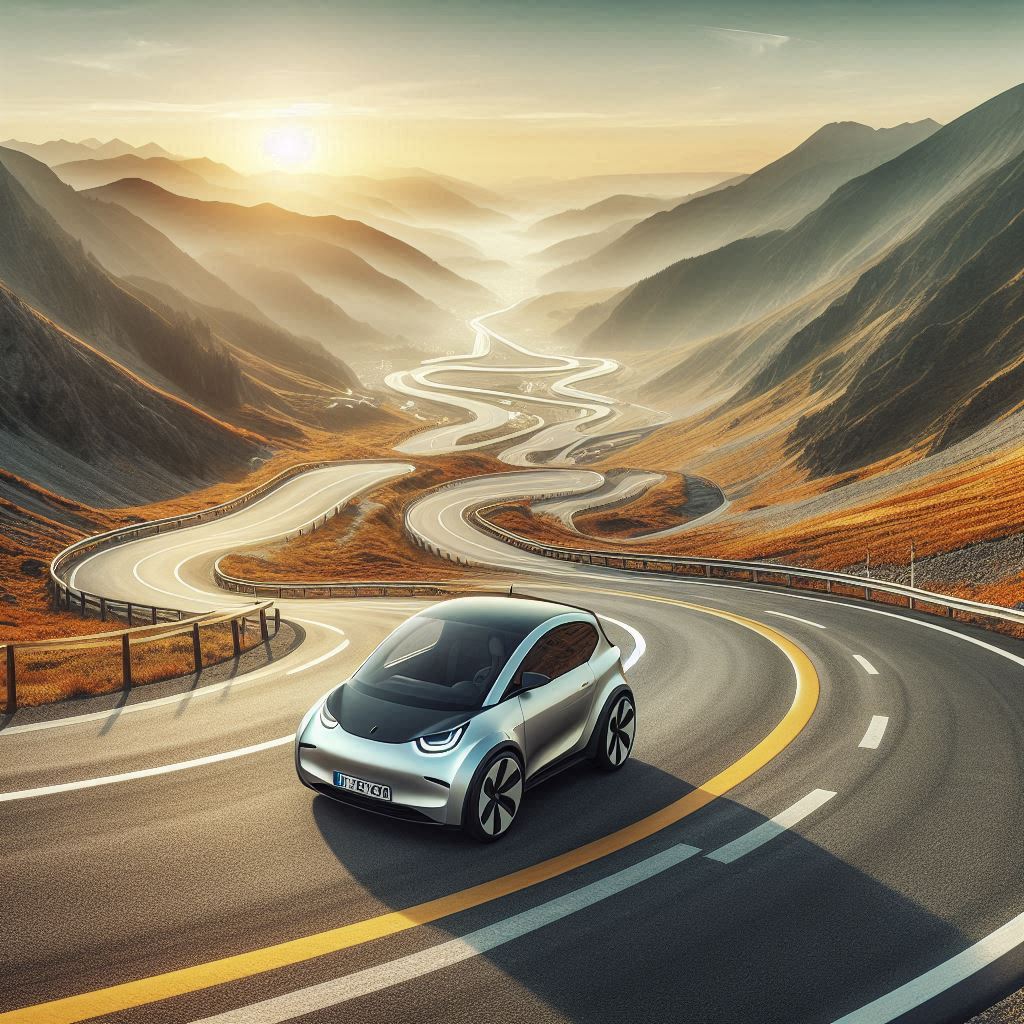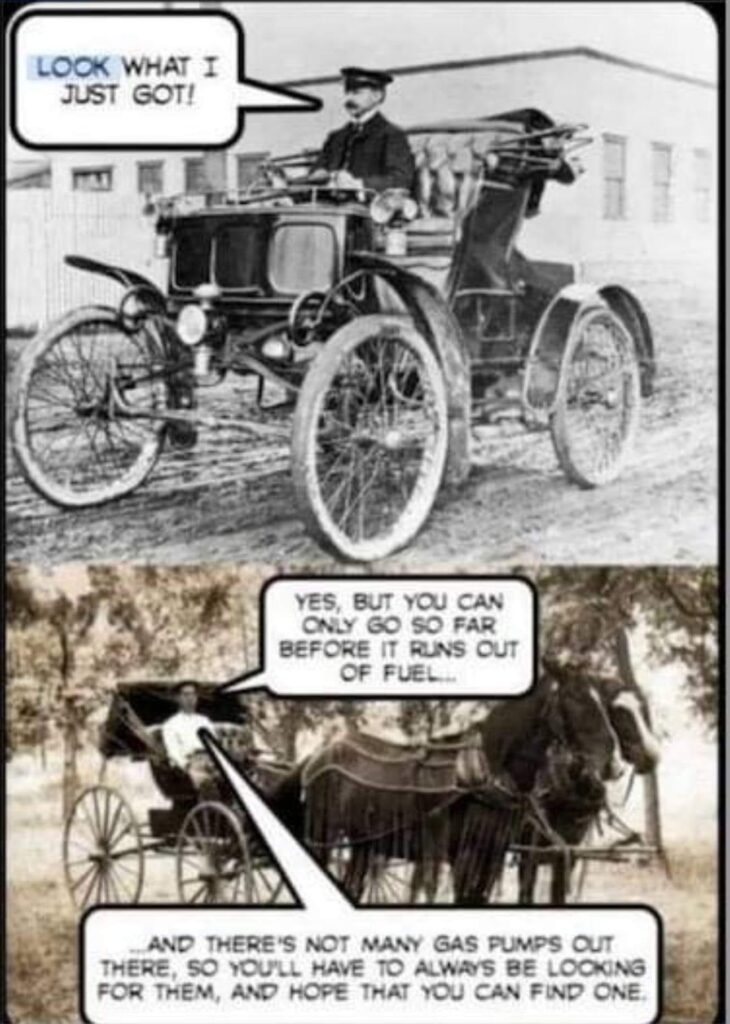You might well ask, Can we use EVs for Emegency Services? What about an electric fire truck, could that work? Electric police car, has that been done, and does it work? What about electric ambulances? Surely not, or is it possible.
Let’s look at some of the key characteristics of emergency services vehicles. What do they do all day? How do they get refuelled? How would charging work?
Tasking and Use
Fire Trucks
Fire trucks spend quite a bit of time in station, waiting for the next emergency, but may also be driven around the neighbourhood or pre-positioned. Trucks need to be driven regularly to ensure they are servicable. The primary need is to get to a scene, where they may be engaged for extended periods. They may need to pump water and provide other services to firefighters. Equipment checks are frequent as firefighters always want to be sure their gear is in top condition. The truck will be idle in station while these checks are done.
Generally distances travelled are not great, but the need for sustained deployment on scene sometimes for extended hours is very important.
Police Cars
Use of police cars can vary quite widely depending on tasking. Highway patrol will often spend time driving up and down highways, but may also spend time waiting in radar traps. Vehicles may also be parked up at stations, or doing general neighbourhood patrols.
Ambulances
Distances travelled can vary. The average reponse times in eastern Australia range between just uunder 9 minutes in NSW to just over 10 minutes in QLD and VIC. Distances travelled on any one job are often quite small, at least in cities with plenty of stations and hospitals.
Ambulances can spend some time in the station, but often spend more time waiting for patient handover at the Emergency Department door. They may be prepositioned for events and may site idle for some time while waiting.
Advantages of EVs for Emergency Services
Using idle time for charging.
Opportunistic charging is the use of otherwise idle time to charge the vehicle. It’s sometimes referred to as “never missing an opportunity to charge”. Plugging in to a charger while at home base, on a break or while waiting for someting else to happen means the vehicle is always getting a bit more range. It’s a different mindset to petrol or diesel where you’re waiting for the tank level to drop to make the fill-up worth the effort. With electric, the only effort is to plug in and walk away while the car tops itself up.
An electric fire truck could be charged in station using existing idle time, while the firies do equipment checks. Under normal circumstances, it would be fairly easy to keep them topped up, only depleting the battery significantly if deployed on extended operations.
Electric ambulances would probably be best served by a combination of fast chargers at stations, and at hospitals. Generally paramedics are required to stay until a full patient handover to triage is completed. This can take considerable time. Putting the electric ambulance on charge while doing the patient handover would ensure the ambulance remains well charged and ready for the next job.
Electric police cars might be a bit more of a challenge as they can be deployed for extended periods on to highway patrols, but even cops need a break. Taking a 20 minute break to top up a highway patrol vehicle every couple of hours will give police a break, improve security at charging stations and improve safety. As charging stations evolve, more services such as toilets, cafes and shops will be aavailable.
Extra space for gear
Electric vehicles use less space for motors, freeing up more space for equipment. The flat floor makes for better use of the space as there are fewer protusions above the flat bed formed by the battery (no drive shafts, gearboxes, etc.). All three emergency services would certainly benefit from better space utilisation, especially without increasing the external dimensions of the vehicle.
Manouvrabillity, Speed and Agility
Low centre of gravity and additional manouverability an be built in to EVs. Multiple motors and the ability to drive each wheel can improve manouvrability in tight spaces. Extra torque and acceleration can get vehicles up to speed very quickly when manouvring past traffic, and could be crucial in pursuit vehicles.
Charging Time
Many wll be at pains to point out that it takes longer to charge a vehicle than it would to put in even a couple of hundred litres of fuel, but take away the time taken to drive to a petrol station and that equation evens up. It might even be more time advantageous to charge in station, where the vrews can relax, perform vital equipment checks, resupply consumables or perform administrative tasks. As crews need to be with the vehicle in case of a call out, they can all stay at the station, rather than loading up for a trip to the petrol station where many of them are wasting time.
Recharging in the field
The biggest disdvantage of EVs for emergency services is going to be recharging while on scene. At sporting fields and event locations, the provision of charging for emergency EVs could easily be included. Water supplies are provided in many buildings such as office blocks, factories and large residential buildings. Provision of electricity could be provided in the same manner. Fire trucks don’t necesarily use water from the building on fire, and may tap into an adjacent building to get their supply if it’s safer to do so, Electricity should be no different.
Some form of portable power supply will be necessary for more remote, extended operations. This may take the form of large batteries, but is more likely to be some form of diesel generator. The detractors will decry the use of dirty power, but having a single generator truck able to top up multiple vehicles on scene will undoubtedly be both efficient and lower emissions.
Reduced Noise
Accident and emergency scenes are inherently noisy environments. Driving a bunch of diesel trucks in to the scene adds additional noise to the environment. Electric vehicles with their reduced noise will make for quieter scene allowing for better commuication between emergency workers. Notwithstanding a need to bring in a single generator truck to periodically recharge vehicles, the noise will be considerably reduced, and the generator could be strategically placed to reduce on scene noise as much as possible.
Is anyone using EVs for Emergency Services?
Although currently small scale, emergency services are embracing EVs. Lower costs, better efficiencies and freeing up resources for other initiatives all make EVs attractive. Not to mention the speed, agility, manouverability and convenience of EVs.Electric Fire Trucks Leading the Way
Now, you may be wondering if electric vehicles can really handle the demands of firefighting. The answer is yes! In Australia, electric fire trucks are already in service in the Australian Capital Territory (ACT) and Queensland. Victoria have one on order from Austria. These trucks are capable of carrying heavy loads and navigating rough terrain, all while reducing their carbon footprint.
Breathing Appratus trucks need to be carefully positioned when refilling tanks. Not only do they need to move upwind of fires, they need to ensure the vehicle’s exhaust, and those of other vehicles, is kept well clear of the air inlets. At least exhaust isn’t a problem with EVs.
Police Forces Embracing EVs
If you’re concerned about the performance of electric vehicles in high-stress situations, consider this: police forces around the world are already embracing EVs. From patrol cars to motorcycles, electric vehicles are proving themselves to be reliable and efficient in law enforcement. Queensland poice have a Kia EV6 in their highway patrol. NSW police have Hyundai ioniq electric police car in service for community policing. WA have a Hyundai Ioniq for their highway patrol.
To take it a step further, police forces are finding that electric vehicles offer several advantages over traditional petrol-powered vehicles. For one, they’re quieter, allowing officers to approach situations more stealthily. They’re also cheaper to maintain and operate, freeing up resources for other important tasks. And with their instant torque, electric vehicles can accelerate quickly when needed, making them well-suited for high-speed chases.
Electric Ambulance Services
St Vincents Hospital in NSW is one of the first adopters of an electric ambulance. Using an LDV van they’re saving 70% on fuel costs and 40% on maintenance freeing up valuable operating cash to provide other vital services to their patients.Military Use
Stay tuned for a future article on how the military are trialling both full electric and hybrid Bushmaster electric vehicles.
Conclusion
An electric fire truck, electric ambulance or electric police car is not just a possibility, they’re a reality across multiple states in Australia. Although only small scale and trials, the emergency services are embracing EVs for their versatility, utility and efficiency. Emergency services are getting to grips with the changes in mindset and operating procedures for EVs. As EVs become more prevalent and charging infrastrucutre matures, electric emergency vehicles will become commonplace. Reducing running costs means money can be put in to better equipment and pay. Lower emissions are almost an afterthought and an added bonus for emergency services.
A South Australian company ACE-EV has a range of light commercial vehicles that might be useful for emergency services.
People probably laughed when petrol vehicles were first suggested for emergencies. “Horses are far more reliable, and you can feed them anywhere” they would have said. “The petrol will probably catch fire” they might have added. Sound familiar? How many times have we heard “Petrol is far more reliable and you can get it anywhwhere, EVs catch fire all the time.” Electricity is the new petrol, with all the same fear, uncertainty and doubt.

